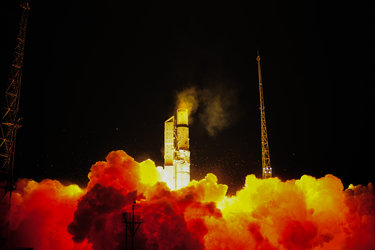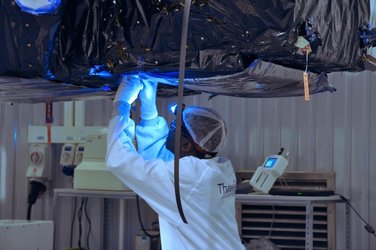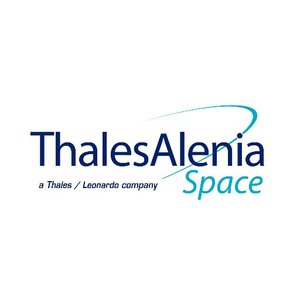Bernd Seitz: Mission, System and Operations Manager
Heading a team of engineers, Bernd Seitz is responsible for the definition and implementation of the interfaces with the ground segment to command and control the Sentinel-3A satellite, to implement the appropriate processing of the measurement data and to carry out early calibration and validation activities.

Bernd Seitz, a German national, joined ESA’s European Space Research and Technology Centre, ESTEC, in the Netherlands in April 1998. Following two years of providing software product assurance support for MetOp and ATV, he switched to Earth Observation as a Software and Operations Engineer in the GOCE project. In 2007, he joined the Sentinel-3 team and took up his current post of Mission, System and Operation Manager.
Bernd graduated from the Technical University in Erlangen, Germany, in 1983 as an Electrical Engineer. Prior to joining ESA, Bernd worked for 13 years at Airbus Defence and Space GmbH in Ottobrunn (formerly known as DASA and MBB-ERNO). He started as a Software Development Engineer for the attitude and orbit control subsystem in the EURECA satellite project. In 1991, he took responsibility for the development of all the software elements in the MIPAS instrument on the Envisat satellite – a satellite considered a precursor to the Copernicus programme.
ESA: What does your role entail?
Bernd Seitz
My role necessitates dealing with several disciplines. For example, satellite operations need a good know-how of the satellite on-board data handling, as well as a good and detailed understanding of how the attitude and orbit control and other subsystems such as power and thermal control are implemented. At the same time, the first level algorithms have to be developed – these serve as the starting point for the operational processing of the instrument measurement data. This allows the actual mission data products to be derived, such as sea-surface height from the SRAL altimeter, sea- and land-surface temperature from the SLSTR radiometer and ocean and land colour data from the OCLI imaging spectrometer.
ESA: The Sentinel-3 satellites carry a number of instruments so does this make your job more difficult?
Bernd Seitz
Indeed, the relatively high number of instruments on Sentinel-3 is challenging. In the area of mission management, for example, we had to balance the different needs of the two separate ‘missions’, the ‘optical mission’ and the ‘topography mission’. Together the OLCI and SLSTR instruments form the basis for the optical mission, while the altimeter with the microwave radiometer, the precise orbit determination equipment and the laser retroreflector form the topography mission. For the optical mission, orbits with a short repeat cycle are optimal because this would give us global world coverage in the shortest time with a wide swath, but the topography mission – which has a narrow swath – is better with a higher repeat cycles to increase the density of the ground track grid therefore reducing the gaps left in the coverage. In the end, following several rounds of analysis, we succeeded in finding an orbit with a short sub-cycle to satisfy the optical mission, and a longer repeat cycle optimising the topography performances.
ESA: Sentinel-3 has been called the ‘workhorse mission for Copernicus’ would you agree with this?
Bernd Seitz
I absolutely agree with this statement. Sentinel-3 will provide global coverage with medium-resolution mission products over land and sea, while Sentinel-1 and Sentinel-2 have a more specific uses. Sentinel-1 focusses on the provision of radar images to allow, for example, the monitoring of shipping routes and detection and tracking of oil spills. Sentinel-2 provides high-resolution optical images that can be used for specific land applications like the monitoring of plant growth and the mapping of land-cover change. While Sentinel-1 and Sentinel-2 focus on dedicated targets, Sentinel-3 will continuously measure surface temperature, surface topography and surface colour over ocean and land. Its data will be available to a range of Copernicus services, in particular the Marine Environmental Service (CMEMS), the Global Land Service (CGLS), the Atmospheric Monitoring Service (CAMS), and the Emergency Management and Climate Service (3CS). As a consequence, it is expected that Sentinel-3 will mark an unprecedented step forward in operational oceanography. And, because of the impact the oceans exert on the climate, observation-based prediction over long periods will also help advance the monitoring, understanding and forecasting of climate change.
ESA: What is the most exciting part of your job?
Bernd Seitz
The most exciting parts happen during the in-orbit commissioning phase, when the operation of the satellite and the processing of the data on-ground start and step by step completed up to fully demonstrating that the satellite and its instruments are performing well. Then, finally, after many years of design and implementation work, one can see the whole system working together and producing the results as specified. This final phase gives indeed a very rewarding feeling.
ESA: What advice would you give to anyone wanting to work in satellite engineering?
Bernd Seitz
I personally find the work in satellite engineering very rewarding. It allows you to follow a programme from beginning to the end, up to the production of the results. For a young person who is just about to graduate in a relevant technical discipline the European Space Agency offers a unique job experience – the Young Graduate programme. This programme offers the opportunity to support an ESA project under the supervision of an ESA tutor. This gives you first-hand experience and insight into satellite engineering from a top down perspective. In my opinion, this would be the perfect starting point for a career in satellite engineering.
Editor's note:
This is one in a series of interviews with some of the key people that are involved in the Sentinel-3 mission. Please check back as further interviews will be added in over the coming weeks.









